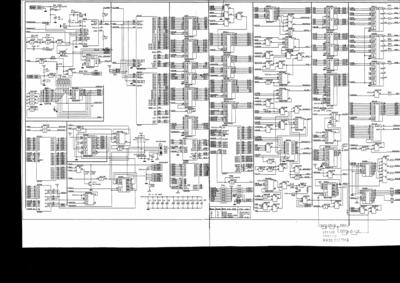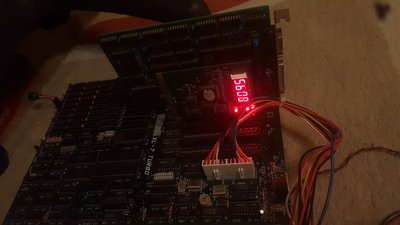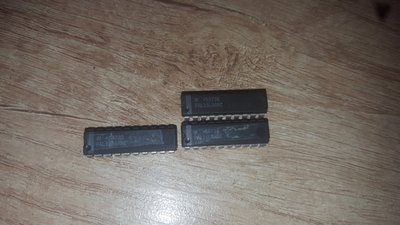First post, by computerguy08
- Rank
- Member
I'm new to the Vogons forum, forgive me for any mistakes 😀
So I've acquired this gem for free a while ago from my local high school (yes, for FREE). It's a XT clone motherboard (XL-7 Turbo), likely pulled out of a bulgarian Pravetz-16 8088 PC.

It was in a really awful state before i got it, somebody aggressively desoldered all of the RAM sockets along with a few other chips. Thankfully, with some patience and some new parts I successfully put it back together... sort of. I am still missing the two PROM chips (see photo, PROM1 and PROM2), it appears to be a PAL16L8ANC from other photos online. AFAIK, these are programmable array logic chips, which unfortunately I didn't get with the motherboard (I have everything else, including the original BIOS EEPROM)
I have tried to test it with spare PAL16L8ANCs (not knowing what they did at that time) but it appeared to be completely dead (no beeps). A debug card didn't help, the POST codes may be sent on 60h instead of 80h ? (just like the IBM 5160). Later, I have attempted to "reverse engineer" the 5160 motherboard in the hope that i could replace the PROMs with TTL logic chips, but that got way over my head.
I've also found a page about this motherboard, but it is in russian, which doesn't really help me, since I don't speak russian: http://www.phantom.sannata.ru/forum/index.php … um_view&o=&st=0
The only other things i know so far is that the reset circuitry works (tested with debug card) and the CPU runs at 4.77MHz and 8MHz (with turbo switch), which I tested using my oscilloscope. Below there is a attachment with a circuit diagram of a very similar XT board from Russia if it helps.
I'm a newbie in the vintage PC world, especially in the XT era, any advice is appreciated.
If anyone can give me help or knows someone who can help me to put this thing back on its wheels, I would be truly grateful.



